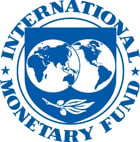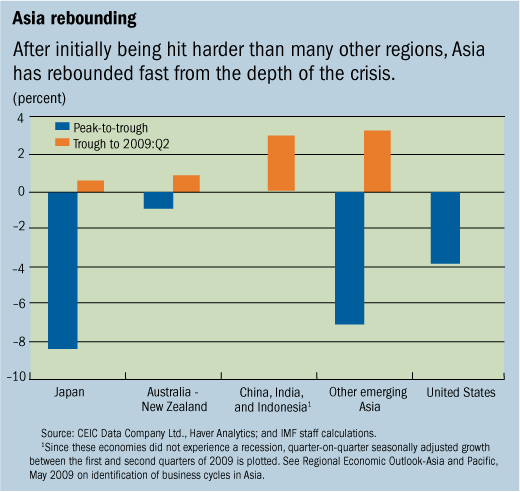
Typical street scene in Santa Ana, El Salvador. (Photo: iStock)
IMF Survey: Asia Recovering Rapidly, but Faces Challenges, says IMF
October 29, 2009
- Rapid recovery, with growth forecast of 5¾ percent in 2010
- Need for continued stimulus until recovery entrenched
- Shift growth towards domestic demand, says IMF
After being hit hard by the global economic slump, Asia is now rebounding fast, according to the IMF in its Regional Economic Outlook for the Asia and Pacific Region.

Checking Chinese-made cars in Shanghai. Weak global demand could impact future Asian growth (photo:Terra/Corbis)
REGIONAL ECONOMIC OUTLOOK
The report says the region is outpacing other parts of the world, with the “green shoots” of recovery appearing earlier and taking firmer root than elsewhere.
However Asia’s outlook remains closely tied to the global economy and the key behind Asia’s recovery was bounce back from the sudden stop in global trade and finance at the end-2008. This has fuelled a rapid recovery in exports, boosting industrial production and overall GDP, says the report.
“Asian economies have been very strong in their stimulus from both monetary and fiscal sources,” said Anoop Singh, Director of the IMF’s Asia and Pacific Department.
In the wake of the global downturn, Asian authorities swiftly deployed packages to boost government spending, reduce interest rates, and stabilize financial markets. These measures were much larger than in previous crises, and in the case of the fiscal programs even larger, on average, than those introduced by the Group of 20 industrialized and emerging market countries.
“The vigorous reaction was made possible by Asia’s relatively strong initial conditions: in many countries, government fiscal positions were sounder, monetary policies more credible, and corporate and bank balance sheets sturdier than at any time in the past,” noted the report
Growth Forecast
IMF forecasts suggest Asia will grow by 5¾ percent in 2010--far higher than the 1¼ percent predicted for the G-7 economies but well short of the 6 ²/3 percent average recorded for the region over the past decade. Given the region’s heavy dependence on exports, the report warned that continued weak global demand would have a considerable impact on Asia’s future growth.
“Asia has boomed as America’s consumption outpaced its income. If over the coming decade, US consumption slows markedly, the impact on Asia’s growth could be sizeable,” the report warned.

Sustaining the Recovery
The IMF report projects that Asian countries will need to maintain policy support for some time as private demand remains weak, and the outlook is far from certain throughout the world.
Asian policymakers will consequently “need to manage a balancing act”, sustaining support for some time so as to nurture the recovery, while ensuring that stimulus is not maintained so long that it ignites asset bubbles, inflationary pressures, or threatens fiscal sustainability.
Singh pointed to the example of Japan in the early 1990s when the country experienced two periods of emerging recovery which were swiftly dashed by severe external shocks and a fragile financial system.
“What that period tells us is that … it is difficult to gauge the strength of a recovery in the presence of a weak financial system, suggesting the need to be cautious on the outlook today,” said Singh.
Longer-term challenge to rebalance growth
The report added that over the longer-term, Asia’s future prospects will depend on the region’s success in allowing domestic sources to play a more important role in promoting growth.
“For Asia to retain its strong growth momentum, it needs to shift the drivers of recovery from an export engine, much more into domestic demand,” said Singh.
He highlighted the need for better social safety nets to reduce precautionary savings and structural reforms to boost productivity and improve the allocation of resources across the economy.
Comments on this article should be sent to imfsurvey@imf.org


